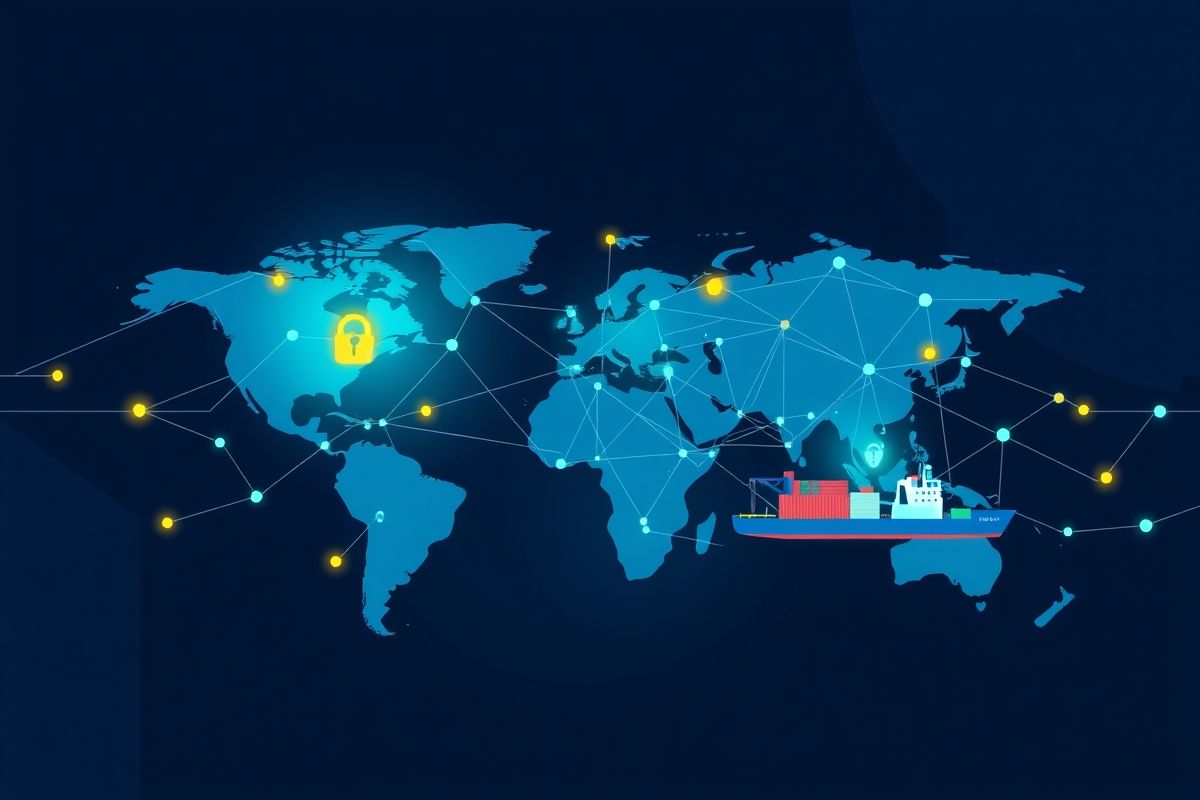Blockchain's Untapped Potential: Revolutionizing Supply Chain Transparency with Case Study Analysis
The global supply chain, a complex web of interconnected businesses, faces persistent challenges. Inefficiencies, lack of transparency, and vulnerabilities to fraud cost businesses billions annually. However, a revolutionary technology is emerging to address these issues: blockchain. This in-depth analysis explores real-world case studies showcasing how blockchain is transforming supply chain management.
The Promise of Blockchain in Supply Chain Management
Blockchain's inherent properties – immutability, transparency, and security – make it ideally suited for addressing key supply chain weaknesses. By creating a shared, immutable ledger of transactions, blockchain enables:
- Enhanced Traceability: Track products from origin to consumer, ensuring authenticity and preventing counterfeiting.
- Improved Security: Reduce fraud and theft by creating a tamper-proof record of transactions.
- Increased Efficiency: Streamline processes, reduce paperwork, and accelerate delivery times.
- Greater Transparency: Provide all stakeholders with real-time visibility into the supply chain.
Case Study 1: Walmart's Food Traceability System
Walmart, a global retail giant, implemented a blockchain-based system to track the origin and movement of its food products. This system leverages Hyperledger Fabric to record information about the product's journey, including harvesting, processing, and distribution. The result? Walmart reduced the time it takes to trace a product's origin from days to seconds, significantly improving its ability to respond to food safety incidents.
Practical Implementation: Walmart partnered with IBM to develop this system, utilizing Hyperledger Fabric's permissioned blockchain architecture. Data is securely shared among various stakeholders in the supply chain, enhancing transparency and trust.
Case Study 2: Maersk's TradeLens Platform
Maersk, a leading global shipping company, partnered with IBM to create TradeLens, a blockchain-based platform that aims to streamline global shipping. This platform uses blockchain to securely share shipping documents, customs information, and other relevant data among various parties involved in the shipping process. This improves efficiency, reduces paperwork, and enhances transparency across the entire supply chain.
Technological Considerations: TradeLens uses a permissioned blockchain, which allows for greater control and governance over the network. However, it also requires careful consideration of data privacy and security.
Case Study 3: Pharmaceutical Supply Chain Integrity
The pharmaceutical industry is particularly vulnerable to counterfeiting. Blockchain offers a solution by providing an immutable record of a drug's journey, from manufacturing to dispensing. Several companies are exploring blockchain solutions to combat counterfeiting and improve supply chain integrity. This includes tracking serial numbers, verifying authenticity, and preventing diversion of medication.
Code Example (Conceptual): A simplified representation of tracking a drug's serial number on a blockchain:
// This is a simplified example and doesn't represent a full blockchain implementation.
const drugData = {
serialNumber: 'ABC123456',
manufacturer: 'PharmaCo',
distributionDate: '2024-10-27'
};
// Simulate adding data to the blockchain
const addDrugToBlockchain = async (data) => {
// In a real blockchain, this would involve interacting with a blockchain network
console.log('Added drug data to blockchain:', data);
};
addDrugToBlockchain(drugData);
Challenges and Considerations
While blockchain offers significant advantages, its implementation in supply chain management faces several challenges:
- Interoperability: Different blockchain platforms may not be compatible, hindering seamless data exchange.
- Scalability: Processing large volumes of data on a blockchain can be challenging.
- Regulation: The regulatory landscape surrounding blockchain is still evolving.
- Cost: Implementing and maintaining a blockchain system can be expensive.
Future Implications and Trends
The use of blockchain in supply chain management is expected to grow significantly in the coming years. We can anticipate:
- Increased adoption of hybrid blockchain solutions: Combining public and private blockchains to leverage the benefits of both.
- Integration with other technologies: Blockchain will be integrated with IoT, AI, and other technologies to create more intelligent and efficient supply chains.
- Development of industry standards: The development of industry standards will improve interoperability and reduce fragmentation.
Actionable Takeaways
- Evaluate your current supply chain processes to identify areas where blockchain can improve efficiency and transparency.
- Research different blockchain platforms and technologies to determine the best fit for your needs.
- Partner with experienced blockchain developers and consultants to assist with implementation.
